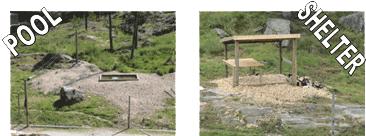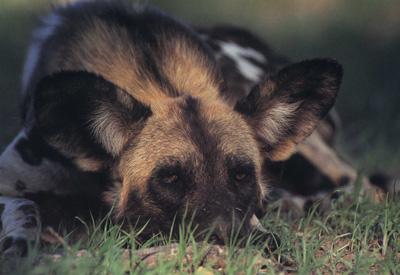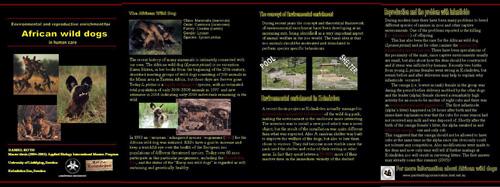This site is best viewed in resolution 1024x768 (and higher)
The African Wild Dog
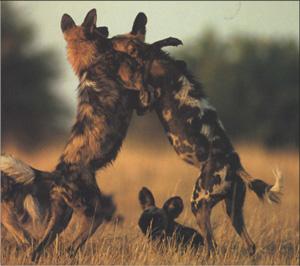
Class: Mammalia (mammals)Order: Carnivora (carnivores)Family: Canidae (canids)Gender: LycaonSpecies: Lycaon pictus
The recent history of many mammals is intimately connected with our own. The African wild dog (Lycaon pictus) is no exception. Karen Blixen, in her books from the beginning of the 20th century, described meeting groups of wild dogs consisting of 500 animals in the Masaiarea in Eastern Africa, but those days are forever gone. Today L. pictus is a highly endangered species, with an estimated total population of only 3000-5500 animals in 1997 and new estimates in 2004 indicating only 2000 individuals remaining in the wild.
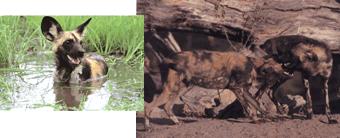
The concept of Environmental Enrichment
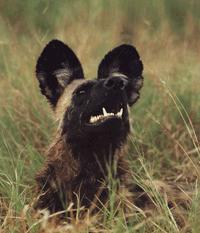
During recent years the concept and theoretical framework of environmental enrichment have been developing at an increasing rate, being identified as a very important aspect of animal welfare in the zoo world. The basic idea is that zoo animals should be motivated and stimulated to perform species specific behaviours.
Thesis project in Kolmården Zoo
Environmental enrichment in Kolmården
A recent thesis project at Kolmården actually managed to increase the explorative behaviours of the wild dog pack, making the environment in the enclosure more interesting. The intention was to install a new pool which was a novel object, but the result of the installation was quite different than what was expected. Also A rain/sun shelter was built to improve the welfare of the dogs, but also to lure them closer to visitors.They did become more visible since the pack used the shelter and reduced their resting in other areas. In fact they spent between 59-96% more of their inactive time in the immediate vicinity of the shelter!
Reproduction
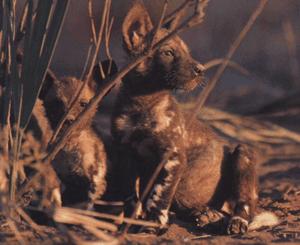
Responsible for this page:
Director of undergraduate studies Biology
Last updated:
05/30/05

